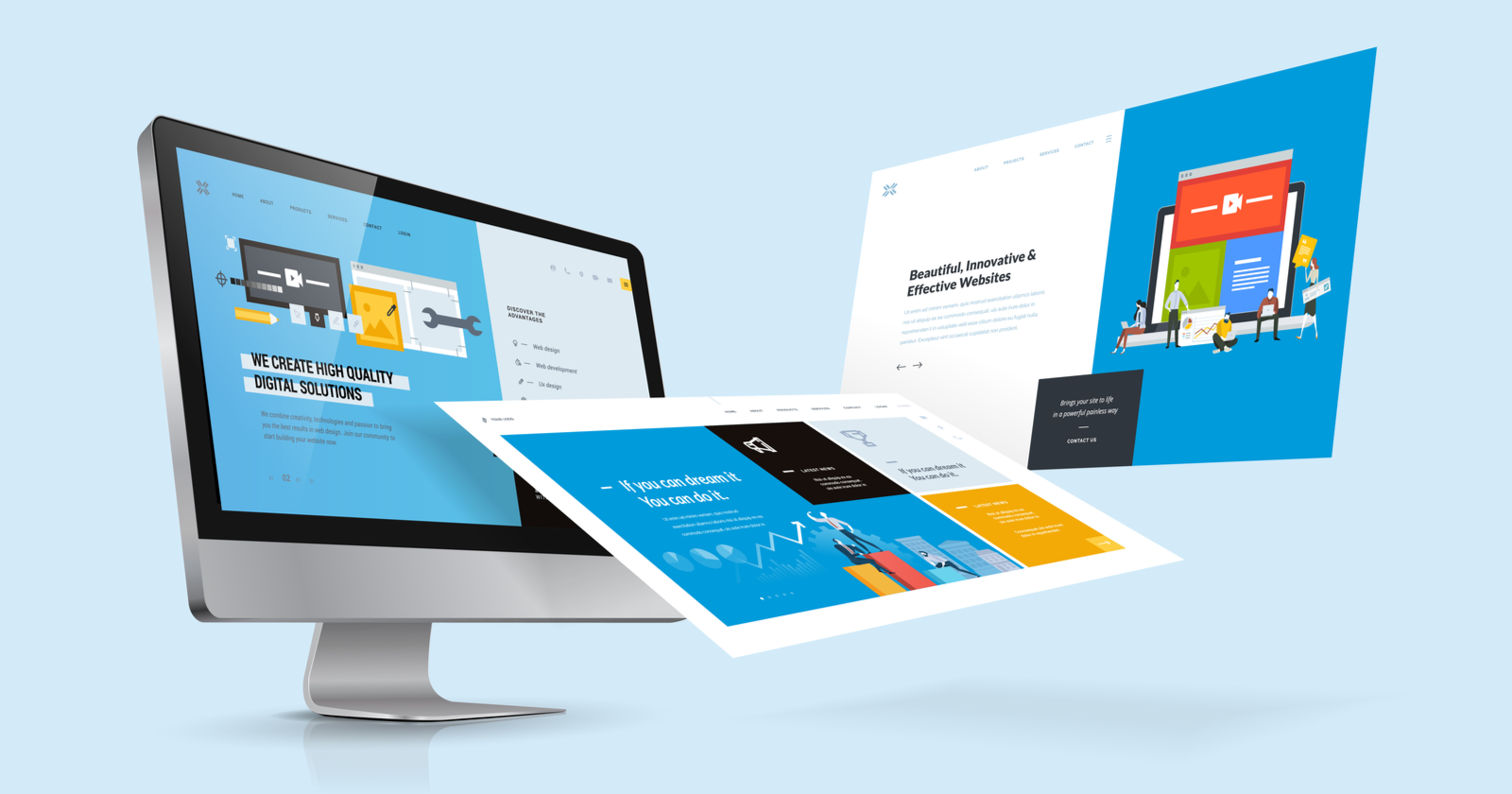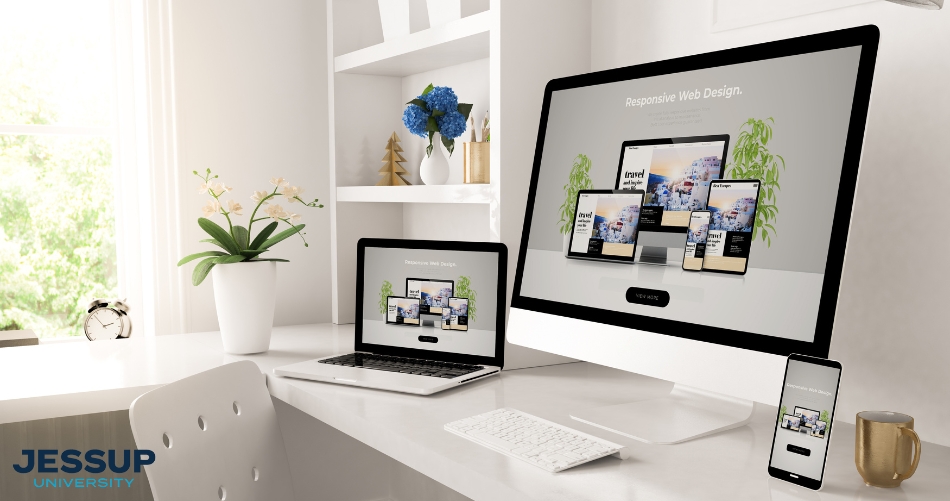Discovering the Different Sorts Of Website Design and Their Unique Benefits
The landscape of Web design incorporates a range of designs, each offering unique benefits that deal with various user needs. Level and minimalist designs emphasize quality, while responsive and material layouts boost flexibility throughout tools. Typography-driven and illustratory strategies aim to boost interaction and emotional vibration. Recognizing these diverse types can substantially impact individual experience and brand name understanding. What lies below the surface of these layout selections?
Minimal Website Design

Minimalist website design commonly includes a minimal shade palette and simple typography, which not only boosts visual appeals but additionally strengthens brand identification. The decreased complexity can lead to much faster packing times, better improving individual satisfaction. Additionally, by lessening aesthetic mess, individuals can engage with material much more effectively, leading to improved comprehension and retention. Overall, minimal Web style fosters a seamless individual experience, making it a preferred option for brand names aiming to communicate clarity and professionalism and trust in their online visibility.
Receptive Web Style
Receptive Web layout has actually ended up being important in today's electronic landscape, making sure mobile compatibility for users across various gadgets. This strategy considerably boosts user experience by supplying seamless navigation and availability, despite display size. As more individuals access the Web on tablet computers and smartphones, the relevance of responsive style remains to grow.

Mobile Compatibility Relevance
As smart phone usage remains to rise, guaranteeing sites work with different screen dimensions has actually become crucial for effective communication and interaction. Mobile compatibility, often accomplished with receptive Web design, permits websites to adapt perfectly to smart devices, tablet computers, and other devices. This flexibility not only gets to a broader audience however additionally enhances brand credibility. An internet site that works well on mobile phones shows professionalism and attention to individual demands. Furthermore, internet search engine focus on mobile-friendly sites in their positions, making compatibility a vital variable for on-line presence. By purchasing mobile compatibility, businesses can boost their electronic existence and deal with the growing variety of customers that access details on the move. For that reason, prioritizing mobile-responsive style is essential in today's digital landscape.
Improved Individual Experience

Flat Design
Level layout is a minimalist strategy to Web style that highlights simpleness and clarity. By getting rid of three-dimensional elements such as shadows, appearances, and slopes, level design creates a visually attractive customer interface that focuses on material and capability. This style advertises an user-friendly navigation experience, as users can promptly identify essential features and actions without diversion.
Among the main advantages of flat style is its responsiveness throughout numerous gadgets and screen dimensions. Its straightforward formats and tidy lines adjust perfectly, making certain a constant experience for customers on mobile, tablet, or desktop computer systems. Furthermore, level layout typically includes strong shades and typography, improving aesthetic effect and brand name recognition.
In addition, the simpleness intrinsic in flat style leads to faster packing times, which adds favorably to customer fulfillment - web design. On the whole, level style remains a preferred option for contemporary Web development, straightening with contemporary visual preferences while delivering superb functionality
Material Style
Product Style stands for a layout language established by Google that concentrates on producing a cohesive and intuitive individual experience throughout digital systems. This method stresses making use of grid-based formats, responsive computer animations, and deepness effects such as lighting and darkness, which help to create a feeling of hierarchy and spatial connections. By imitating the physical globe, Product Layout permits users to interact with electronic user interfaces in a more natural and engaging way.
One of the vital benefits of Material Design is its versatility throughout numerous gadgets and screen dimensions, making sure a constant experience for users. Furthermore, it advertises a clear aesthetic language that boosts usability, making it much easier for customers to navigate complex applications. The consolidation of vibrant colors and bold typography additionally plays a crucial function in accentuating essential components, thus boosting general customer interaction - website design. As A Result, Material Layout has actually become a popular option among developers looking for to create visually appealing and useful sites
Typography-Driven Design
Typography-Driven Style concentrates on the tactical usage of type to enhance the aesthetic and functional aspects of a web site. This style strategy prioritizes fonts, font dimensions, spacing, and power structure to create visual passion and guide customer experience. By thoroughly picking typography, designers can convey brand identification and evoke emotions, making the web content a lot more obtainable and interesting.
Efficient typography improves readability and functionality, making certain that customers can conveniently navigate the site and take in information. The appropriate mix of type can also develop a clear aesthetic pecking order, enabling individuals to swiftly recognize crucial messages and phones call to activity.
A typography-driven method can be adapted to numerous gadgets, making sure consistency across platforms. This adaptability is essential in today's multi-device landscape, where user experience is critical. Eventually, Typography-Driven Design offers not just as an artistic selection yet likewise as a functional component that greatly impacts an internet site's efficiency.
Illustrative Website Design
Illustratory Web layout utilizes visual narration techniques that can greatly improve customer engagement. By integrating special images, websites can create a remarkable brand identity that resonates with their audience. This technique not just mesmerizes site visitors yet likewise connects messages in an aesthetically compelling fashion.
Visual Storytelling Strategies
A multitude of Web click resources designers use visual storytelling strategies to create immersive and appealing customer experiences. This approach integrates images, design, and typography to narrate a tale that reverberates with individuals on an emotional level. By integrating compelling visuals, developers can efficiently share messages and evoke sensations, directing visitors through a brand name's journey. Infographics, computer animations, and interactive elements serve to boost stories, making intricate info extra accessible and remarkable. Furthermore, aesthetic storytelling can develop a natural brand name identity, as consistent images and motifs strengthen core worths and messages. Eventually, this technique not only astounds individuals but additionally promotes a deeper link with the material, encouraging exploration and retention. Via proficient application, visual narration changes common Web experiences into significant and vibrant communications.
Enhancing User Involvement
Reliable website design considerably improves customer interaction by leveraging illustrative components that draw interest and foster interaction. Images can simplify complex principles, making them much more remarkable and friendly for customers. They break the dullness of text-heavy web pages, producing aesthetic breaks that welcome expedition. Furthermore, unique pictures can stimulate feelings, motivating individuals to get in touch with the material on a much deeper degree. Interactive aspects, such as computer animations or hover impacts, can additionally improve interaction by inviting individuals to participate actively as opposed to passively eating information. This technique not just keeps visitors on the website longer yet additionally increases the likelihood of return sees. Inevitably, reliable illustrative website design transforms the customer experience, making it more impactful and pleasurable.
Branding Via Illustration
Aesthetic elements play a significant role fit a brand's identification, and pictures are an effective device hereof. Illustratory Web design allows brand names to convey their distinct individuality and values through personalized artwork. This method fosters a much deeper psychological link with the target market, boosting memorability and interaction. By incorporating illustrations, brands can separate themselves in a jampacked industry, creating a distinct visual narrative that resonates with their target market. Furthermore, images can simplify complicated principles and make web content more easily accessible, effectively communicating messages in an interesting fashion. In general, branding through image not only enhances the user experience yet likewise enhances brand recognition, making it an important strategy for companies aiming to establish a solid on-line visibility.
Often Asked Inquiries
Exactly how Do I Select the Right Web Style Kind for My Business?
To choose the right website design type for a business, one must assess objectives, target audience, and industry requirements. Assessing individual experience and capability will certainly lead the choice procedure for perfect interaction and performance.
What Tools Are Best for Developing Different Website Design Designs?
Popular devices for creating varied Web style styles consist of Adobe XD, Figma, Lay Out, and WordPress. Each offers one-of-a-kind attributes customized to various design requirements, making it possible for developers to build visually enticing and useful websites successfully.
Just How Much Does Professional Web Style Commonly Price?
Professional Web layout typically sets you back in between $2,000 and $10,000, depending upon intricacy, functions, and designer competence. Custom-made options and recurring maintenance might raise expenditures, while design templates my company can supply more economical alternatives for less complex tasks.
Can I Incorporate Several Website Design Keys In Properly?
Yes, integrating several Web design types can be efficient. By integrating components from various styles, designers can produce one-of-a-kind, engaging individual experiences that cater to diverse audiences while boosting capability and aesthetic use this link charm.
How Do Layout Trends Impact Individual Experience and Involvement?
Design patterns greatly influence individual experience and interaction by enhancing visual charm, boosting navigating, and fostering emotional connections - branding. Remaining upgraded with fads allows designers to create instinctive interfaces that resonate with individuals and motivate extended interactions
Flat and minimalist layouts stress clearness, while responsive and material designs enhance flexibility throughout tools. It might appear counterproductive, minimal Web style stresses simplicity to improve individual experience. Responsive Web design plays an essential role in improving customer experience by making certain that an internet site adjusts flawlessly to various display dimensions and gadgets. Level design is a minimal technique to Web design that highlights simpleness and clearness. Product Design represents a style language established by Google that focuses on creating a user-friendly and cohesive individual experience throughout electronic platforms.